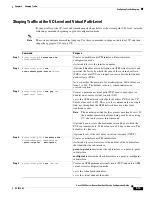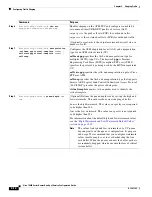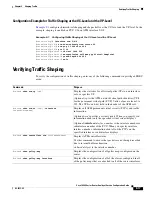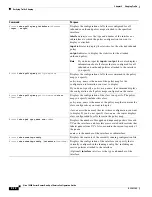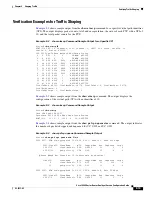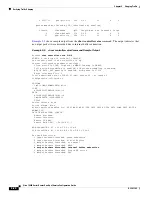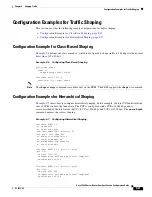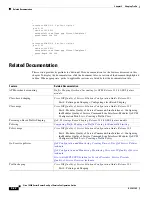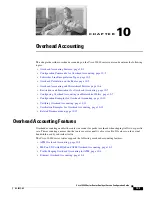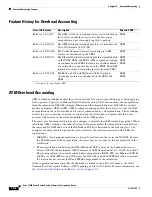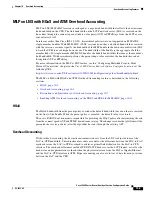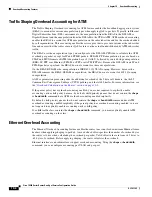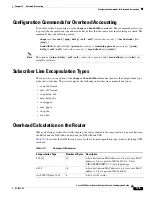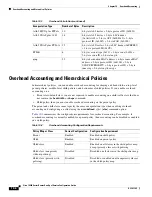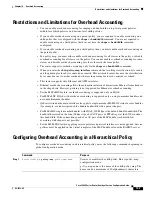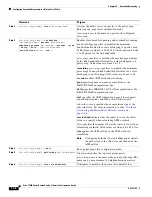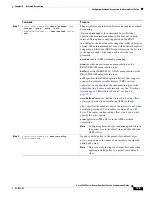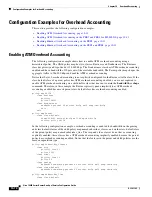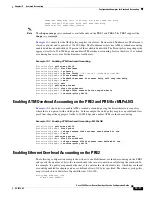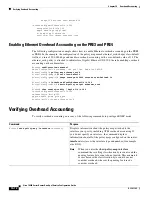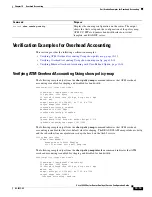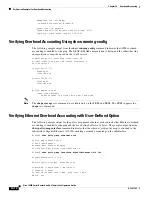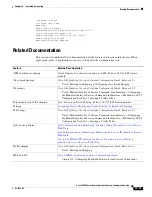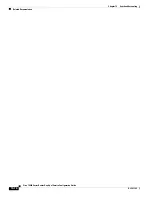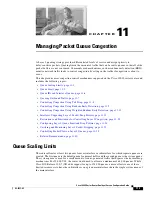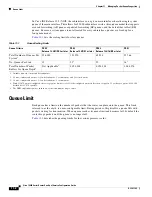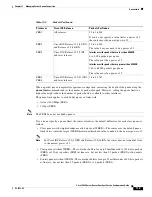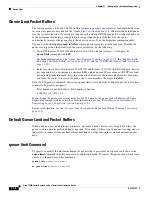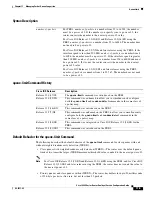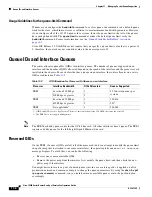
10-7
Cisco 10000 Series Router Quality of Service Configuration Guide
OL-7433-09
Chapter 10 Overhead Accounting
Restrictions and Limitations for Overhead Accounting
Restrictions and Limitations for Overhead Accounting
•
You can enable overhead accounting for shaping and bandwidth on top-level parent policies,
middle-level child policies, and bottom-level child policies.
•
If you enable overhead accounting on a parent policy, you are required to enable accounting on a
child policy that is configured with the
shape
or
bandwidth
command. You are not required to
enable accounting on a child policy that does not have the
shape
or
bandwidth
command
configured.
•
If you enable overhead accounting on a child policy, then you must enable overhead accounting on
the parent policy.
•
In a policy map, you must either enable overhead accounting for all classes in the policy or disable
overhead accounting for all classes in the policy. You cannot enable overhead accounting for some
classes and disable overhead accounting for other classes in the same policy.
•
The router supports overhead accounting only for the
shape
and
bandwidth
commands.
•
When you enter the
show policy-map interface
command, the resulting classification byte counts
and the queuing feature byte counts do not match. This mismatch occurs because the classification
byte count does not consider overhead, whereas the queuing features do consider overhead.
•
This feature supports only Ethernet and ATM interfaces.
•
Ethernet overhead accounting allows the automatic inclusion of downstream Ethernet frame headers
in the shaped rate. However, policing is not supported for Ethernet overhead accounting.
•
For the MLPoLNS feature, overhead accounting is supported only on HQoS.
•
For MLPoLNS, HQoS with overhead accounting is supported only on single-member bundles and
not on multimember bundles.
•
QoS restriction on the main interface also apply to single-member MLPoLNS virtual-access bundles
(for example, oversubscription of the bundle bandwidth with a parent shaper).
•
For MLPoLNS single-member bundles with HQoS, 100 Mbps is the default bundle bandwidth. The
bandwidth received on the line (Connect speed of AVP pairs or PPPoE tags) at the LNS overrides
this bandwidth. If the connection speed of an AV pair of the MLP bundle is arbitrarily low,
overriding with shaper is not possible.
•
For the MLPoLNS feature, applying service policies on physical interfaces is not supported. Service
policies must be applied on the virtual template of the MLP bundle or from the RADIUS server.
Configuring Overhead Accounting in a Hierarchical Policy
To configure overhead accounting in a hierarchical policy, enter the following commands beginning in
global configuration mode:
Command
Purpose
Step 1
Router(config)#
policy-map
policy-map-name
Creates or modifies the child policy. Enters policy-map
configuration mode.
policy-map-name
is the name of the child policy map. The
name can be a maximum of 40 alphanumeric characters.

